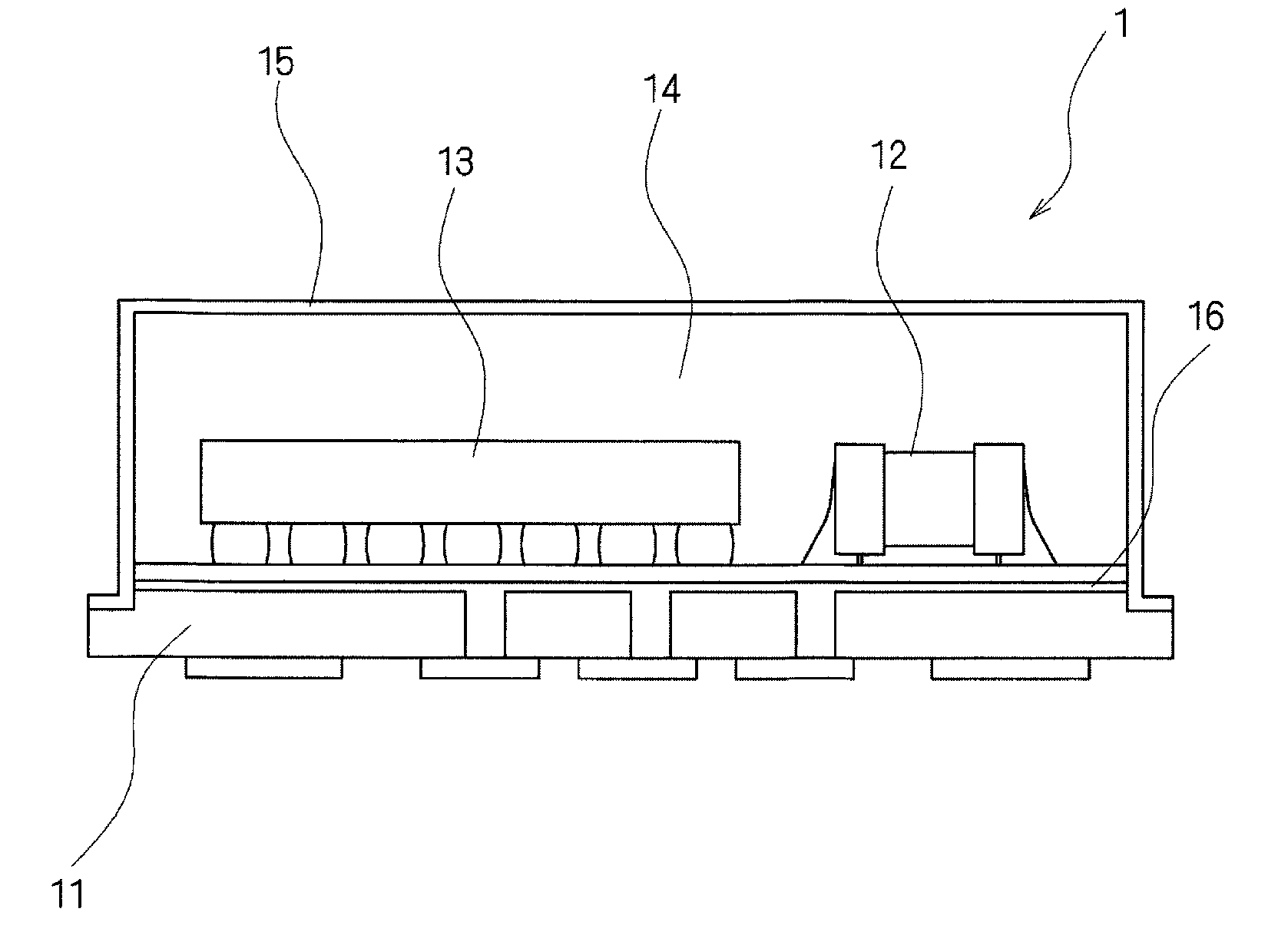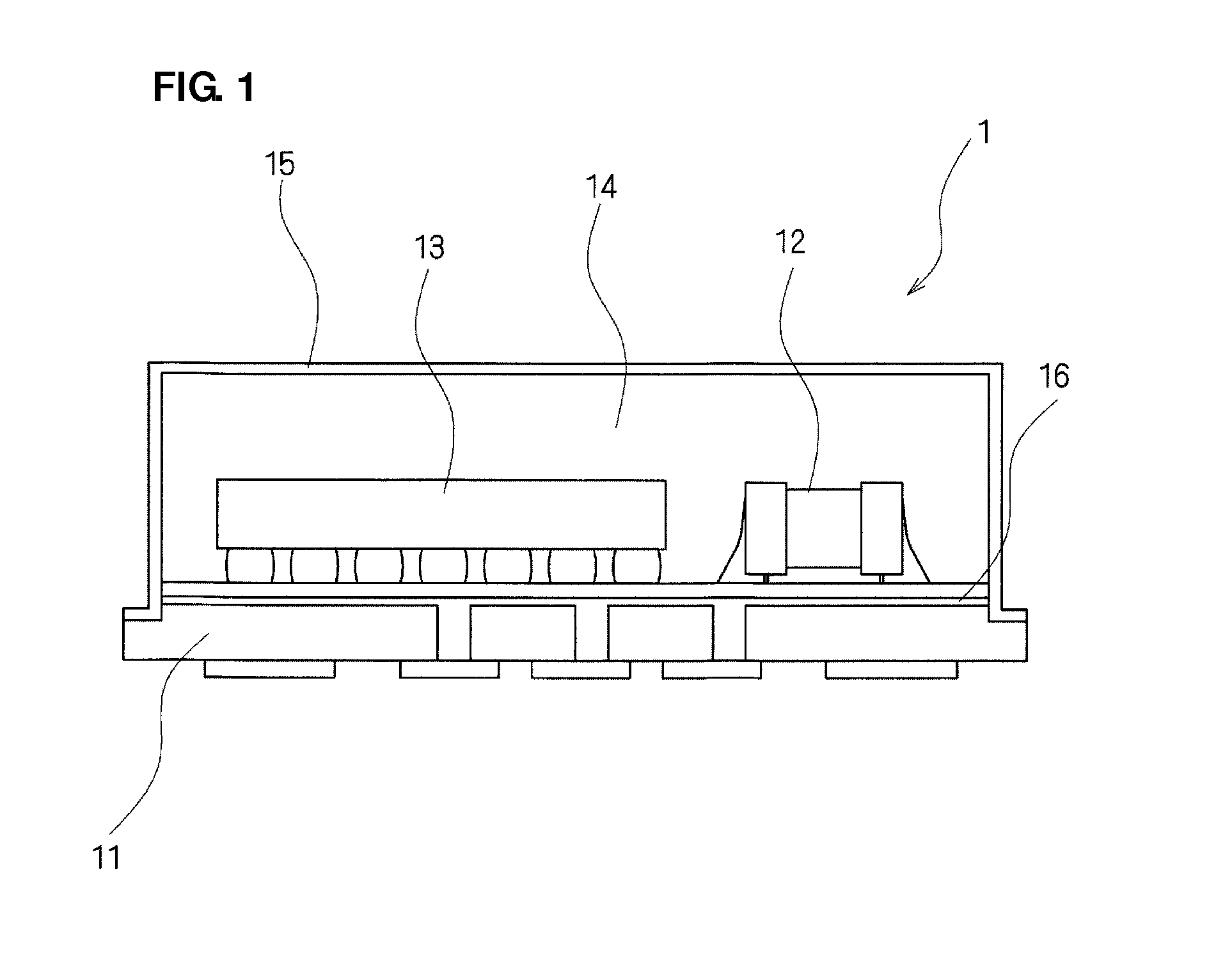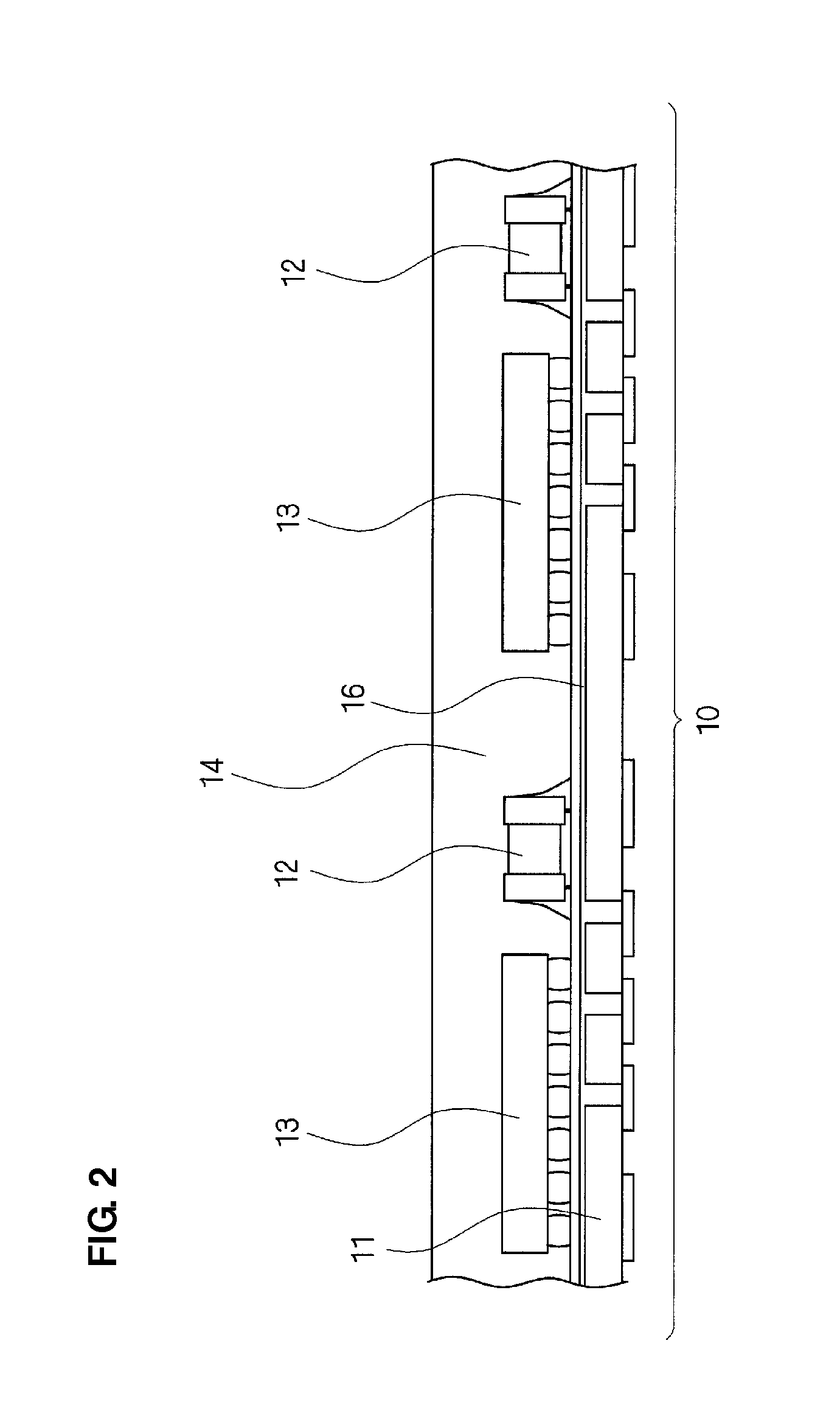Method for manufacturing electronic component module
a technology of electronic components and manufacturing methods, applied in the direction of resistive material coating, solid-state device coating, metallic material coating process, etc., can solve the problems of voids within the resin layer, electronic components may not be adequately shielded from electric field noise and electromagnetic wave noise, and the bottom of the groove section may be incompletely filled or filled, etc., to achieve a lower profile and lower profile
- Summary
- Abstract
- Description
- Claims
- Application Information
AI Technical Summary
Benefits of technology
Problems solved by technology
Method used
Image
Examples
first preferred embodiment
[0032]FIG. 1 is a cross-sectional view illustrating the structure of an electronic component module according to a first preferred embodiment of the present invention. The electronic component module 1 according to the first preferred embodiment of the present invention preferably has, for example, dimensions of about 10.0 mm×about 10.0 mm×about 1.2 mm, and includes a circuit substrate 11 including ceramics, glass, an epoxy resin, or other suitable material, and electronic components 12 and 13, such as semiconductor elements, capacitors, resistors, SAW filters, for example, which are disposed on a surface of the circuit substrate 11.
[0033]The circuit substrate 11 is preferably, for example, a resin substrate having a rectangular upper surface and a thickness of approximately 0.6 mm, for example. The surface of the circuit substrate 11 is provided with a signal pattern (not shown) which also defines a junction pad with the electronic components 12 and 13 and with a grounding electrod...
second preferred embodiment
[0047]FIG. 8 is a cross-sectional view illustrating the structure of an electronic component module according to a second preferred embodiment of the present invention. The electronic component module 1 according to the second preferred embodiment of the present invention differs from the first preferred embodiment in that electronic components 12 and 13, such as semiconductor elements, capacitors, resistors, SAW filters, for example, are disposed on both sides of a circuit substrate 11 including ceramics, glass, an epoxy resin, or other suitable material, for example.
[0048]Both sides of the circuit substrate 11 are provided with a signal pattern (not shown) which also defines a junction pad with the electronic components 12 and 13 and with a grounding electrode 16 exposed adjacent to the circuit substrate 11. The signal pattern of the circuit substrate 11 is connected to the terminals of the electronic components 12 and 13, such as each semiconductor element, capacitor, and resisto...
third preferred embodiment
[0055]FIGS. 10A to 10C are cross-sectional views illustrating the structure of an electronic component module 1 according to a third preferred embodiment of the present invention. The electronic component module 1 according to the third preferred embodiment of the present invention differs from the first and second preferred embodiments in that the cross-sectional shape around the conductive connection of a grounding electrode 16 to a shield layer 15 near the bottom of a side section is a curved shape or a shape with a predetermined gradient.
[0056]FIG. 10A is cross-sectional views illustrating the structure of an electronic component module 1 according to the third preferred embodiment of the present invention. A side section shown in FIG. 10A is a view of the cut sections 17 in FIGS. 3 through 5, showing the shape of an edge section A near the bottom. FIG. 10B is a cross-sectional view illustrating a structure of an edge section of an electronic component module 1 according to the ...
PUM
| Property | Measurement | Unit |
|---|---|---|
| thickness | aaaaa | aaaaa |
| thickness | aaaaa | aaaaa |
| conductive | aaaaa | aaaaa |
Abstract
Description
Claims
Application Information
 Login to View More
Login to View More - R&D
- Intellectual Property
- Life Sciences
- Materials
- Tech Scout
- Unparalleled Data Quality
- Higher Quality Content
- 60% Fewer Hallucinations
Browse by: Latest US Patents, China's latest patents, Technical Efficacy Thesaurus, Application Domain, Technology Topic, Popular Technical Reports.
© 2025 PatSnap. All rights reserved.Legal|Privacy policy|Modern Slavery Act Transparency Statement|Sitemap|About US| Contact US: help@patsnap.com



